Concevoir le meeting

Choose a welcome and introduction method/tool and ice-breakers
There are many ways for an efficient and more or less easy (and fun) round of introductions. It is essential that participants share their names, professional profiles and special interest or challenge and/or expectations of the meeting.
Try to give enough time to people to introduce themselves and get to know each other, as it will be easier for them to work together later.
Exemples
- Sharing the name and one movement, and next person has to repeat name and movement and also present themselves. The last person in the circle has to repeat everything and the whole group repeats their name and movement.
- Ask participants to bring with them an image (even on their mobile phones) connected or representing a challenge they face in their sector and introduce them selves talking about their choice.
- Working in pairs for ten minutes. People talk about themselves and they present one another to the big group.
- People look at many different pictures that the facilitator provides, choose one and then talk about why they chose the picture and how they are connected to it.
- Also, if the space is appropriate, you can try to include some movement in the activity to activate the participants.
For more inspiration, take a look at:
Choose one or more brainstorming, idea sharing and/or ‘match up’ methods/tools
You can think of working individually, in pairs, in small groups or in the big group.
If you choose to work in small groups, try for them not to have more than 4-5 participants, as the communication is better this way and people have more space to express their thoughts and ideas.
Try to give to people the opportunity to talk about their work, also about their dreams. It is important for them to be motivated.
Exemples
- Sharing in the big group each one’s biggest dream and then working in small groups to imagine an activity that could include one little piece of those dreams.
- Using the images from the presentation activity, create stories in small groups and try to imagine how you could bring them in life or make a positive change.
- Work in groups/pairs and write down the most essential needs of your sector. Pass the paper to another group/pair and try to imagine how art can help solving the issues above.
- Mapping the meet-up: you will need a board or big surface, coloured moderation cards or post-it and pens or markers. The goal is to visualise the skills and competencies and also the needs or each sector and to discover the meeting points and/or links as starting point of collaborations.
- Speed dating/networking: to efficiently frame the tool, ask the participants to start with presenting to each other what they can bring (skills, knowledge, strong points, aspirations,) and what they miss in their work/sector
- Plus d’infos sur cet outil : https://en.wikipedia.org/wiki/Speed_networking
- Échanges en petits groupes
Choose a sum-up/closing tool and possible follow-up
Give some time for people to present their pair or group work in the big circle. Also, try to have some more time, as usually, the participants want to ask questions and talk about what is presented ; at this last part of the meeting, they tend to get inspiration of the ideas and presentations they listen to, and need to discuss more and have more interaction.
Questionnements à parcourrir
- Will the participants present what they came up with as possible collaboration?
- Will the organiser sum-up the outcomes? On site or in a next step of communication?
- How was the experience of the meeting for each participant?
Create a list with all the material and equipment needed and make your provisions-up
List all material and equipment you will need depending on the implementation methods you chose.
Questionnements à parcourrir
- Will you need pens/papers, a flip-chart board, a projector, laptop/s, cables, adaptors, speakers?
- Can the meeting venue provide all/some of them? If not, by whom and how will they be provided?
- Do the participants also need to bring any kind of equipment or material with them? Are they informed?
Create a list with all persons needed (facilitators) and contact them
- Technician ?
- Note keeper ?
- Animateur des débats ?
- Gardien du temps ?
- etc
Communicate your meeting’s needs with the responsible person of the meeting venue
Give some time to check the equipment and staff needs (lists above) with the responsible person of the meeting venue. Ideally, make a technical check if you are going to use technological equipment such as projectors and microphones.
Also, try to take care of the issues below :
- Will the meeting include any drinks/catering?
- Do you need a signed agreement for the use of the venue?
N’oubliez pas
Taking care of all those issues means supporting yourself as a facilitator of the meeting. As much better you organise yourself, then the less stressful will be the implementation of the meeting.


